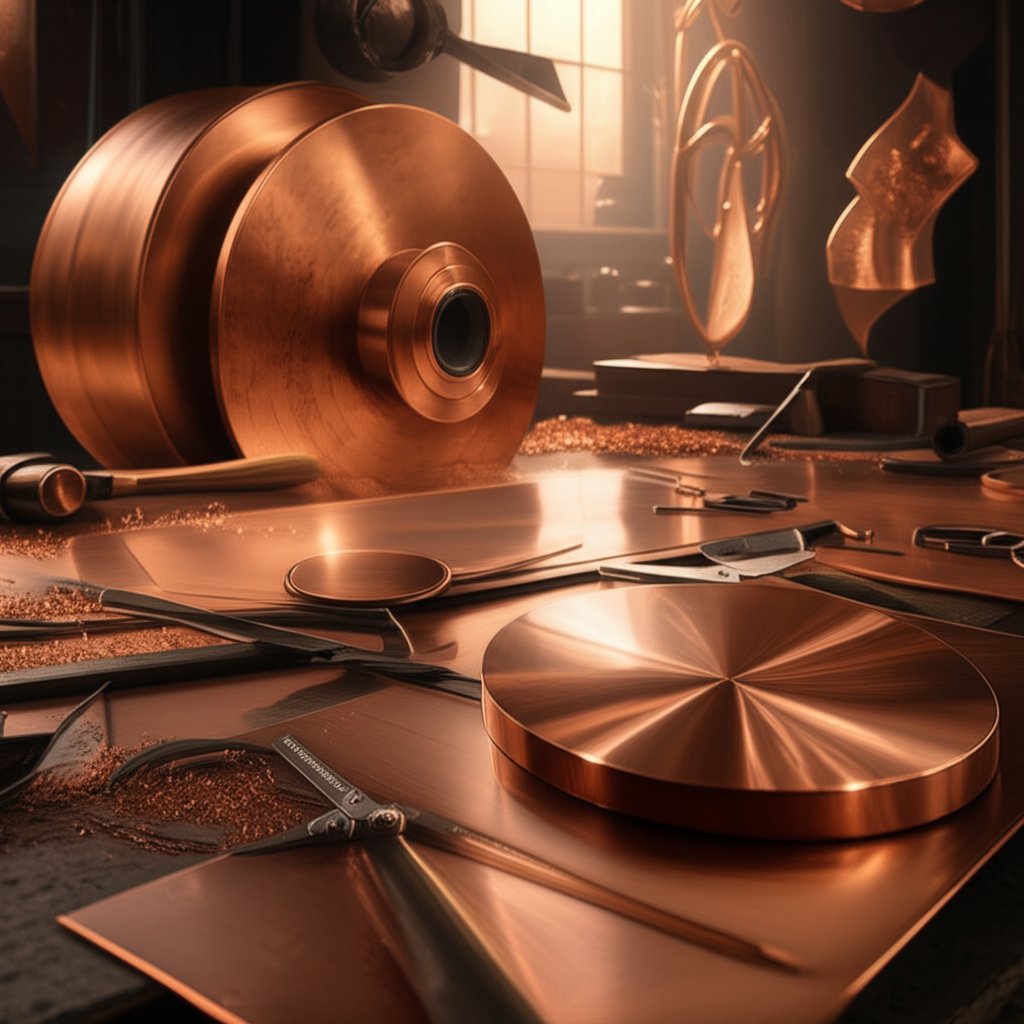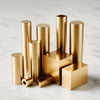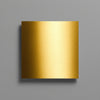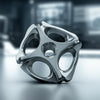Copper Sheet Thickness Decoded: 16 Oz, 18–24 Gauge, Mils

Copper Sheet Basics You Can Trust
What Is Copper Sheet?
Ever wondered what gives buildings their distinctive green rooftops or what makes certain kitchen surfaces both beautiful and hygienic? The answer often lies in copper sheet—a flat, thin piece of copper metal available in a wide range of thicknesses and formats. Unlike copper wire or tubing, copper sheets are prized for their broad, flat surfaces, making them ideal for everything from architectural details to intricate craftwork. These sheets are produced by rolling pure copper into thin, manageable layers, resulting in a material that is both strong and easy to work with.
Copper Sheet vs Copper Plate vs Copper Foil
Sounds complex? Let’s break it down. In the world of copper sheet metal, thickness is the main factor that distinguishes copper foil, copper sheet, and copper plate. Here’s a quick comparison:
| Product Type | Qualitative Thickness Range | Typical Uses |
|---|---|---|
| Copper Foil | Very thin (think paper-thin) | EMI/RFI shielding, crafts, electronics, arts |
| Copper Sheet | Thin to moderately thick (flexible, but sturdy) | Roofing, flashing, countertops, decorative panels, electrical busbars |
| Copper Plate | Thick, rigid (structural) | Machined parts, heavy-duty electrical, industrial equipment |
Manufacturers and suppliers use these terms based on thickness: copper foil is the thinnest, copper sheet is the mid-range, and copper plate is the thickest. For example, Lester Metals defines copper foil as up to about 0.0079", copper sheet from 0.008" to 0.0125", and copper plate as thicker than 0.0125".
Why Choose Copper Sheet for Projects?
So, why do builders, engineers, and makers reach for copper sheets? Imagine a material that combines beauty, durability, and performance. That’s copper sheet. Its unique blend of properties makes it a staple across industries:
- Outstanding electrical and thermal conductivity—ideal for electrical systems, heat exchangers, and power transmission.
- Corrosion resistance—withstands weathering and develops a protective patina, perfect for roofing and cladding.
- Antimicrobial properties—naturally inhibits bacteria, making it a smart choice for kitchens, hospitals, and food processing areas.
- Easy to form and solder—high malleability allows for bending, embossing, and joining without cracking.
- Long service life—durable and low-maintenance, copper sheets stand up to decades of use.
Few materials match copper sheet’s versatility—whether you’re designing architectural details, building electrical components, or crafting decorative art, its unique combination of formability, conductivity, and durability makes it a top choice.
Common Sizes and Tempers You Will See
When shopping for copper sheets, you’ll notice a variety of sizes and tempers. Sheets are typically available as flat panels, rolls, or strips, with standard thicknesses often measured in ounces per square foot or by gauge. Common tempers include:
- Soft (annealed): Extremely malleable—great for complex forming and decorative work
- Cold rolled (harder tempers): More rigid and strong—best for roofing, flashing, and structural applications [Copper Development Association]
Typical formats include:
- Flat sheets or blanks (for cutting, stamping, or forming)
- Rolls and strips (for continuous applications like flashing or gutters)
- Custom-cut panels (for architectural or artistic projects)
Now that you know what copper sheet is and why it’s so widely used, you’re ready to dive deeper into how thickness, gauge, and weight affect its performance and suitability for your next project.

Decoding Copper Sheet Thickness and Gauge
Understanding Copper Sheet Gauge
When you shop for copper sheet, you’ll quickly encounter a maze of numbers: gauge, mils, ounces per square foot. Sounds confusing? Let’s break it down with real-world examples and simple explanations.
In the copper industry, thickness is expressed in several ways: gauge number (a traditional sheet metal scale), mils (thousandths of an inch), and ounces per square foot (weight-based, especially for roofing and architectural uses). For instance, a 16 oz copper sheet means each square foot weighs 16 ounces, while a 24 gauge copper sheet refers to a specific thickness on the gauge scale—but these numbers don’t always match up with steel or aluminum gauges.
Gauge to Thickness to Weight Conversions
In construction and roofing, weight per square foot is a go-to standard. Here’s how common copper sheet weights translate to thickness and gauge:
| Ounce per Sq. Ft. | Gauge (B&S) | Thickness (inches) | Weight (lb/ft²) | Weight (kg/m²) | Typical Uses |
|---|---|---|---|---|---|
| 16 oz | 24 | 0.0216 | 1.00 | 4.88 | Roofing, flashing, gutters, backsplashes |
| 20 oz | 21 | 0.027 | 1.25 | 6.10 | Countertops, roofing, heavy flashing |
| 32 oz | 18 | 0.043 | 2.00 | 9.76 | Bar tops, heavy-duty hoods, radius gutters |
| 48 oz | 14 | 0.0647 | 3.00 | 14.64 | Custom hoods, industrial worktops |
Recommended Uses by Ounce Weight
Still unsure which thickness is right? Here’s a practical guide to help you match sheet weight and thickness to your project:
- 5–10 mil (30–36 gauge): Thin copper sheets, easily cut and shaped—ideal for crafts, embossing, or electrical shielding.
- 16 oz (24 gauge): The industry standard for roofing, flashing, and gutters; also used for backsplashes and wall cladding.
- 20 oz (22 gauge): Better for countertops, bar tops, and high-wear surfaces where extra durability is needed.
- 32 oz and up (18–14 gauge): Heavy-duty applications like custom range hoods, industrial worktops, or architectural accents.
For intricate work or forming, thin copper sheets are easier to bend and emboss by hand. For surfaces that see lots of use, like a bar top or roof, opt for a heavier gauge or higher ounce weight for better longevity and dent resistance.
- Choose lighter gauges (higher numbers) for embossing, crafts, or where flexibility is key.
- Pick heavier gauges (lower numbers) for high-traffic or load-bearing surfaces.
- Always consider your forming method—sharper bends require thinner material, while thick sheets may need a brake or professional tools.
- Check the minimum bend radius for your chosen thickness to avoid cracking.
- If you need a thin copper sheet roll for continuous applications, verify that your tools can handle the width and thickness.
Gauge numbers are not universal across metals—a 24 gauge copper sheet is much thicker than 24 gauge steel. Always use a copper-specific gauge chart before ordering or fabricating.
Understanding these thickness and gauge conventions helps you confidently select the right copper sheet for your project. Next, let’s explore how alloy and temper impact performance, so you can fine-tune your choice for conductivity, strength, and formability.
Alloys, Tempers, and Material Properties of Copper Sheet
Common Copper Sheet Alloys and Tempers
When you’re evaluating copper sheet for your next project, the alloy and temper you choose will shape everything from electrical performance to ease of fabrication. Sounds complex? Let’s break it down with a practical look at what’s available and why it matters.
| Alloy/Designation | Typical Use-Cases | Pros | Cons | Where to Avoid |
|---|---|---|---|---|
| Pure Copper (C11000, ASTM B370) | Roofing, flashing, electrical busbars, decorative panels | Highest conductivity, excellent formability, corrosion resistance | Softer, lower strength than alloys | Heavy-duty structural or marine loads |
| High Yield Copper (C11000, H01 temper) | Flashing, architectural details requiring strength | Higher yield strength, thinner sheets possible | Less malleable than soft temper | Intricate forming or deep draws |
| Copper Alloys (Brass, Bronze) | Decorative panels, marine hardware, machinery | Improved strength, wear resistance, machinability | Lower conductivity, may tarnish differently | Electrical busbars, high-conductivity needs |
Most pure copper sheet and copper metal sheet products for construction or electrical use are made from C11000 (electrolytic tough pitch copper), which delivers 99.9% copper content and is available in a range of tempers.
Mechanical and Physical Properties That Matter
Imagine you’re choosing between pure copper sheet metal for a kitchen backsplash and a copper plate metal for a heavy-duty busbar. What should you consider? Here’s a quick snapshot of the key physical properties that drive performance:
| Property | Pure Copper Sheet | Copper Alloys (e.g., Brass, Bronze) |
|---|---|---|
| Density | High | Similar or slightly higher |
| Thermal Conductivity | Very high | Lower than pure copper |
| Electrical Conductivity | Excellent | Lower than pure copper |
| Tensile/Yield Strength | Moderate (increases with cold working) | Higher (especially in bronze/brass) |
| Elongation (Ductility) | Very high | Varies (generally lower) |
| Corrosion Resistance | Excellent | Good (bronze excels in marine) |
How Temper Affects Formability and Springback
- Soft (Annealed) Temper: Extremely malleable; ideal for deep draws, embossing, or complex shapes. Easily bent by hand but may lack stiffness for load-bearing applications.
- Cold Rolled (Half-Hard, Hard): Increased strength and springback. Better for roofing, flashing, and structural work where the sheet must hold its shape under stress.
- High Yield (H01): Balances strength and some formability; often used for thinner sheets in demanding architectural details.
Choosing the right temper for your copper sheet ensures the material will behave as expected during fabrication and in service. For example, soft temper is perfect for intricate ornamentation, while half-hard is better for straight, crisp folds.
When to Choose Pure Copper vs. Alternatives
Still deciding between pure copper sheet and an alloy? Here are some practical guidelines:
- Pick pure copper sheet metal when you need maximum conductivity—think electrical busbars, shielding, or cookware cladding.
- Choose an alloy (brass, bronze) for mechanical strength, wear resistance, or specific color/finish requirements—common in decorative or marine settings.
- For most architectural, roofing, and interior design uses, standard pure copper (C11000) in the right temper delivers the best balance of workability and durability.
The best copper sheet for your project balances conductivity, corrosion resistance, and formability. Soft tempers make shaping easy, while harder tempers hold their form—choose based on whether you need flexibility or strength for your application.
With a clear understanding of copper sheet alloys, tempers, and physical properties, you’re ready to see how these choices translate into real-world architectural, electrical, and artistic applications.

Real World Uses That Play To Copper’s Strengths
Architectural and Roofing Applications
When you picture a historic building with a green-tinted roof or sleek modern accents, you’re often seeing the work of copper sheet. Why is copper roof material so enduring? It’s thanks to copper’s blend of weather resistance, flexibility, and timeless beauty. Copper roofing panels and copper metal roof panels are frequently chosen for both restoration and cutting-edge architecture. Their main advantages include:
- Excellent resistance to rain, snow, and industrial atmospheres
- Natural patina formation that protects and adds character
- Ability to form complex shapes for domes, spires, and gutters
- Long service life with minimal maintenance
For flashing, valleys, and gutters, copper flashing is the industry standard. Its malleability allows it to seal joints and adapt to movement, preventing leaks even as buildings settle or expand. Thinner sheets (10–16 mil, 30–26 gauge) are ideal for flashing, while heavier 16 oz (24 gauge) or 20 oz (22 gauge) sheets are typical for panels and standing seam roofs.
Kitchens and Interior Design
Step into a high-end kitchen or artisan bar, and you’ll likely spot copper’s signature glow. Copper countertops, copper backsplash panels, and custom copper range hood designs are favored for both their looks and cleanliness. What makes copper ideal for these interiors?
- Antimicrobial surface—naturally inhibits bacteria and mold
- Easy to clean and maintain (with or without patina)
- Warm, inviting color that ages gracefully
- Customizable through texturing, patina, or polished finishes
In these settings, 16 mil (26 gauge) to 22 mil (24 gauge) copper sheets are popular: thick enough for durability, but still formable for edge details or curves. For wall panels and backsplashes, thinner sheets (10–16 mil) can be bonded to a substrate for stability and cost savings.
Electrical and EMI Shielding Uses
Need to control static or protect sensitive equipment? Copper sheet’s superior conductivity makes it a go-to material for electrical busbars, circuit boards, and electromagnetic interference (EMI) shielding. In these applications:
- Thin copper sheets (1–10 mil) are used for shielding electronics, cables, and enclosures
- Heavier gauges are chosen for power distribution and grounding bars
- Consistent thickness and surface finish are critical for performance
Because of its reliability, copper remains a staple in both commercial and industrial electrical design [Bullion Pipe].
Artistic Forming and Embossing
Imagine shaping metal into a sculpture, an intricate wall panel, or a decorative accent. Artists and makers love copper sheet for its workability and visual impact. Here’s why:
- Soft tempers allow for deep embossing, repousse, and complex curves
- Patina can be controlled or encouraged for unique finishes
- Compatible with a wide range of tools and hand techniques
For artistic projects, thinner sheets (5–16 mil, 36–26 gauge) are most common, as they can be cut and formed by hand or with simple tools.
Application Considerations: Getting the Most from Copper Sheet
- UV and Weather Exposure: Outdoor copper will patina over time; plan for evolving color
- Structural Support: Use a substrate for thin copper wall panels or countertops to prevent denting
- Thermal Expansion: Allow for movement in large panels or roofs to prevent warping
- Sealing Seams: Solder or mechanically join copper flashing for watertightness
- Patina Expectations: Decide if you want to preserve the bright finish or embrace natural aging
| Application | Recommended Thickness | Finishing/Maintenance |
|---|---|---|
| Copper roofing panels, copper metal roof panels | 16–20 oz (24–22 gauge) | Allow natural patina or apply clear lacquer for shine |
| Copper flashing, valleys, gutters | 10–16 mil (30–26 gauge) | Seal seams, inspect for debris, maintain as needed |
| Copper countertops, range hoods, backsplashes | 16–22 mil (26–24 gauge) | Bond to substrate, wax or oil to control patina |
| Copper wall panels, decorative art | 5–16 mil (36–26 gauge) | Support with backing, finish as desired |
| Electrical/EMI shielding | 1–10 mil (38–30 gauge) | Maintain clean surfaces, check for continuity |
Patina develops naturally on exterior copper, shifting from bright to brown to blue-green over years. This evolving finish adds character and protection—so consider how your project’s color will change over time, especially for visible surfaces.
With these real-world examples and practical tips, you can confidently match copper sheet’s unique properties to your next project—whether you’re building, designing, or creating something entirely new. Up next, we’ll guide you through selecting the right size and sourcing copper sheets for your needs.
Buying And Sizing Guide For Sheets And Rolls
Choosing Between Sheet Panels and Rolls
When you’re ready to purchase copper sheet, you’ll notice the sheer variety of formats: classic 4×8 panels, long rolls, custom-cut blanks, and even ultra-thin foil. Sounds overwhelming? Let’s break down how each format fits different project needs and how to decide where to buy copper sheets that best match your requirements.
| Format | Ease of Handling | Waste | Shipping/Storage | Typical Use-Cases |
|---|---|---|---|---|
| 4×8 Sheet Panel | Stiff, manageable for two people | Low (standard sizes fit many jobs) | Requires flat storage, can be bulky | Countertops, wall panels, roofing, fabrication |
| Cut-to-Size Sheet | Tailored to spec, easy to handle | Minimal (less trimming needed) | Flat or boxed, efficient for small jobs | DIY, crafts, repairs, small architectural details |
| Coil/Roll | Flexible, can be heavy in large lengths | Efficient for continuous runs | Compact, shipped in rolls | Flashing, gutters, long seams, embossing |
| Foil | Very light, easy to cut by hand | Minimal | Flat-packed or rolled, easy to store | EMI/RFI shielding, crafts, electronics |
Standard Sizes and Tolerances
You’ll often see copper sheet available in standard sizes such as 3' × 8', 4' × 8', or 36" × 96" panels, and in rolls ranging from a few inches to several feet wide. Thickness options typically follow common gauges or ounce weights, as detailed in earlier sections. For projects like countertops or backsplashes, a flat, full-width panel minimizes seams and waste. For flashing or continuous runs, a roll or coil is more efficient. Always check the supplier’s thickness and dimensional tolerances, especially if your project needs a precise fit or finish.
Local Pickup vs Online Ordering
Wondering where can I buy copper sheet metal or where to buy copper sheet metal near you? Local metal suppliers or specialty hardware stores may carry standard sheets or rolls in popular sizes, which is convenient if you need material quickly or want to inspect it before purchase. However, for custom sizes, specialty finishes, or bulk orders, online suppliers often provide a broader selection and direct shipping. If you’re searching for where can you buy sheets of copper for unique projects, online vendors can also cut to your specifications and offer advice on the right alloy, temper, or finish for your needs [Basic Copper].
- Confirm the thickness is compatible with your brake, bender, or forming tools.
- Check flatness requirements, especially for countertops or wall panels—warped sheets can be difficult to install.
- Specify the temper (soft or hard) based on your fabrication process.
- Verify if protective films are included for surface-sensitive or polished applications.
Don’t forget to ask your supplier about scrap buyback or recycling programs; returning offcuts can lower your total project cost and support sustainability.
Once you’ve selected the right size and format, your next step is to plan for fabrication. Up next, you’ll learn best practices for cutting, forming, and machining copper sheet to achieve professional results.

Fabrication And Machining Best Practices for Copper Sheet Projects
Clean Cutting and Burr Control
Ever tried slicing a copper sheet and ended up with jagged edges or warped metal? Clean, precise cutting is essential—whether you’re working with a copper sheet metal roll for flashing or a small panel for decorative work. The method you choose depends on thickness and project size:
- Tin snips or hand shears: Best for thin copper sheet (up to ~0.016")—great for crafts, hammered copper sheet projects, or quick trims.
- Band saws or mechanical saws: Use bimetallic blades for thicker sheets; support the material to prevent vibration and ensure a straight cut.
- Shearing, waterjet, or laser cutting: Ideal for straight, burr-free edges and high-volume runs—especially with rolled copper sheeting or large copper sheet roll stock.
- Jeweler’s saw: For intricate or artistic cuts, such as those needed for perforated copper sheet or detailed inlays.
After cutting, always deburr the edges—use a half-round file or fine abrasive pad to remove sharpness. For best results, wear nylon gloves to protect the finish and your hands from sharp burrs and fingerprints.
| Process | Edge Quality | Heat Impact | Throughput | Best For |
|---|---|---|---|---|
| Shearing | Clean, straight | None | High | Flashing, roofing strips |
| Waterjet Cutting | Very smooth | None | Medium | Thick or large sheets, no heat distortion |
| Laser Cutting | Sharp, precise | Minimal (may discolor thin sheet) | High | Intricate patterns, fast production |
| Router/CNC Mill | Custom, variable | Low with coolant | Medium | Complex shapes, pockets, holes |
Bending Radii and Forming Tips
When you bend or form copper, you’re taking advantage of its natural malleability. But even with rolling copper sheet or making hammered copper sheet art, there are best practices to avoid tearing or kinks:
- Minimum bend radius: As a rule of thumb, keep the inside bend radius at least equal to the sheet thickness to prevent cracking.
- Anneal if needed: For tight curves or repeated bends, anneal (soften) the copper by heating and cooling to restore flexibility.
- Use soft jaws and padded dies: When clamping or bending, protect the copper’s surface—nylon jaws or masking films help prevent scratches.
- Support wide bends: Use a brake or form with a backing block to keep bends crisp and even, especially with heavy copper sheet roll stock.
For artistic forming, like creating hammered copper sheet textures or rolled copper sheeting with curves, work slowly and use polished tools to avoid marring the surface. Always wear nylon gloves for both protection and to maintain a clean, fingerprint-free finish.
Soldering and Brazing Considerations
Joining copper sheets? Soldering and brazing are your go-to techniques. Here’s what you need to know:
- Cleanliness is key: Remove all grease, dirt, and oxide before soldering or brazing for a strong bond [Righton Blackburns].
- Soft soldering: Use tin-based solders for low-strength joints (e.g., decorative seams, light-duty electrical connections).
- Hard soldering (silver solder): For stronger, high-temperature joints—ideal for structural or load-bearing seams.
- Brazing: Suitable for most copper alloys (except those with high aluminum or lead content); delivers robust, leak-proof joints for HVAC, plumbing, and architectural details.
- Heat control: Use heat sinks or work in stages to avoid overheating thin copper, which can warp or discolor.
When CNC Machining Copper Sheet Makes Sense
Need ultra-precise holes, pockets, or intricate patterns in your copper sheet? CNC machining is the answer—especially for repeatable, high-tolerance parts like perforated copper sheet panels or custom electrical components. Copper’s softness and conductivity require careful machining setup:
- Sharp carbide tools: Minimize burring and tool wear.
- Efficient chip evacuation: Prevents heat buildup and surface scoring.
- Coolant or lubrication: Reduces friction and helps achieve a clean finish.
- Soft jaws or fixtures: Secure the sheet without marring the surface.
- Masking films: Protects decorative finishes from scratches during machining.
If your project requires tight tolerances, complex contours, or a fast turnaround—from prototype to production—consider professional CNC machining services. Providers like XTJ offer advanced 4 and 5-axis machining, tolerances down to +/- 0.005mm, and rapid lead times, supporting copper among 30+ materials. This is especially valuable for applications like architectural grills, custom busbars, or decorative panels where accuracy and repeatability are critical.
To prevent work-hardening and cracking, moderate your feed and speed during machining or forming, and avoid excessive cold working between anneals. Taking your time and using the right setup ensures copper’s beauty and performance last through every stage of fabrication.
With these fabrication fundamentals, you’re ready to shape, join, and finish copper sheet for any project—whether you’re crafting a one-of-a-kind art piece or fabricating high-precision industrial parts. Up next, explore how to maintain your copper’s finish, control patina, and ensure long-term durability.
Finishes, Patina, and Long-Term Care for Copper Sheet
Understanding Natural Patina
Ever notice how some copper kitchen range hoods or historic rooftops develop a rich, greenish hue over time? That’s copper patina in action—a natural process where copper reacts with air, moisture, and environmental elements. This transformation begins with a warm, golden tone, shifts to brown, and eventually can become blue-green (verdigris), especially outdoors or in humid, salty air. Many homeowners and designers intentionally embrace this look, seeing patina copper as a sign of authenticity and character. But for others, keeping a bright, polished finish is the goal.
Cleaning and Polishing Without Damage
Sounds tricky? Keeping your copper sheet looking its best is easier than you might think—if you use the right approach. Whether you’re maintaining hammered copper sheet metal in an art piece or a smooth backsplash, gentle cleaning is key:
- Dust regularly with a soft, dry cloth to prevent buildup.
- For routine cleaning, use mild soap with warm water and a soft sponge or cloth. Avoid harsh chemicals or abrasive scrubbers that can scratch the surface [SKIND].
- To tackle tarnish, try natural solutions like a paste of lemon juice and baking soda or a mix of vinegar and salt. Gently rub the surface, rinse well, and dry completely.
- For a deeper shine, use a commercial copper polish designed for sheet metal. Always test on a small, hidden area first and follow product instructions.
- If your copper is lacquered (sealed), stick to soapy water only—polishes or abrasives can remove the protective layer.
For intricate surfaces, such as hammered copper or embossed panels, use a soft toothbrush to reach into crevices without scratching. Always dry surfaces thoroughly after cleaning to prevent water spots or streaks.
Sealants and Protective Coatings
Want to keep that just-polished look? Protective coatings can help preserve copper’s shine and slow down patina formation. Here’s how common strategies compare:
| Finish Type | Appearance | Upkeep Frequency | Suitability |
|---|---|---|---|
| Raw/Uncoated | Bright at first, develops natural patina | Low (embrace aging) | Exterior cladding, artistic work, hammered copper sheet metal |
| Waxed | Subtle sheen, slows patina | Reapply every few months | Kitchens, bars, backsplashes |
| Oil-Rubbed | Warm, deep tone, highlights texture | Periodic reapplication | Decorative panels, artisan work |
| Lacquered | High-gloss, maintains original color | Minimal (avoid abrasives) | Countertops, copper kitchen range hoods, interior panels |
| Pre-Patinated | Controlled color (green, blue, brown, black) | Low (color set by artisan) | Architectural facades, custom art |
For food-contact surfaces, such as countertops or bar tops, always verify that any sealant or lacquer is approved for kitchen use. If unsure, consult the manufacturer or choose a finish specifically labeled food-safe.
When to Embrace Patina vs Keep a Bright Finish
Should you let your copper sheet age gracefully or fight the patina? It depends on your aesthetic goals and where the piece is installed:
- Embrace Patina: Ideal for exterior cladding, garden sculptures, or where a rustic, evolving look is desired. Patina copper naturally resists further corrosion and tells a visual story over time.
- Keep a Bright Finish: Best for modern kitchens, copper kitchen range hoods, or high-traffic interiors where a clean, reflective surface is preferred. Regular cleaning and protective coatings are essential here.
For hammered copper or detailed sheet metal art, patina can highlight textures and create dramatic visual depth. In contrast, a polished finish showcases copper’s natural luster and is easier to sanitize in food prep areas.
Patina formation is highly dependent on environment—an indoor backsplash or countertop will age slowly and subtly, while exterior copper wall panels or roofing will develop dramatic color shifts much faster. Always consider your project’s location and intended look when planning maintenance.
With the right care, your copper sheet—whether raw, polished, or patinated—will remain a lasting, beautiful feature for years to come. Next, we’ll explore how to budget, source responsibly, and make smart decisions for sustainable copper sheet projects.
Costs, Sustainability, and Smart Sourcing for Copper Sheet Projects
What Drives Copper Sheet Cost?
Ever wondered why copper sheet price seems to change so frequently, or why the 4x8 sheet of copper price can vary from one supplier to another? The answer is a mix of global economics, material specs, and practical project choices. Let’s break down the core cost drivers so you can plan your budget with confidence.
| Factor | How It Impacts Price | Practical Example |
|---|---|---|
| Thickness | Thicker sheets use more raw material and energy, raising cost | 16 oz vs. 32 oz—double the copper, higher price per square foot |
| Alloy/Temper | Pure copper is pricier than some alloys; harder tempers may add processing cost | Architectural C11000 (pure) is more costly than brass or bronze |
| Finish | Polished, brushed, or coated finishes increase fabrication time and expense | Mirror-polished sheet for a bar top costs more than mill finish for flashing |
| Cut-to-Size vs. Standard | Custom sizes require extra labor and may generate more scrap | Ordering a custom 38" x 96" panel vs. a standard 4x8 sheet |
| Order Volume | Larger orders often qualify for volume discounts | Buying 50 sheets for a roof vs. a single panel for art |
| Market Copper Price | Raw copper cost (cathode) is set by global exchanges; prices rise with demand or supply shocks | Spikes in LME/COMEX copper price directly impact sheet cost |
| Region & Logistics | Shipping, tariffs, and local demand affect final price | Local pickup may be cheaper than importing, especially for heavy or bulky items |
Budgeting Tips for Projects
Planning a project and asking yourself, "how much is a sheet of copper?" or "What’s the best way to keep costs in check?" Here are some actionable strategies:
- Lock in prices with long-term supply agreements if your project is large or schedule-sensitive—this shields you from market swings.
- Consider standard sizes and thicknesses to avoid custom surcharges and excess scrap.
- Request quotes from multiple suppliers so you can compare the price of sheet copper and spot outliers.
- Factor in finish and fabrication needs—sometimes a slightly thicker but standard sheet is cheaper overall than a custom thin gauge with special coating.
- Use financial hedging or price escalation clauses if your project timeline is long or copper prices are volatile.
Remember, copper sheet price isn’t just about the metal—it’s about the total package: material, processing, logistics, and waste management.
Recyclability and Scrap Strategies
Did you know that copper is one of the most recyclable building materials on the planet? Recycling copper sheets or offcuts isn’t just good for the environment—it’s also a smart way to control project costs and reduce your carbon footprint. Here’s why recycling matters:
- Energy savings: Recycled copper uses up to 85% less energy than mining new copper, reducing both costs and emissions.
- Consistent quality: Copper can be recycled indefinitely without losing its properties, making scrap a valuable resource.
- Market buffer: Scrap copper helps stabilize supply and can be sold back to recyclers, offsetting your upfront costs.World Resources Institute
From Concept to Finished Components: A Practical Action Plan
Ready to turn your idea into a finished copper sheet part? Follow this step-by-step approach for cost-effective, responsible sourcing:
- Confirm your specs: Nail down thickness, alloy, temper, finish, and dimensions before you shop.
- Request multiple quotes: Compare copper sheet price and lead times from at least three reputable suppliers.
- Plan for drop utilization: Optimize your cutting layout to minimize waste and maximize use of each sheet.
- Arrange scrap collection: Partner with a local recycler or ask your supplier about buyback programs for offcuts and trimmings.
- Consider fabrication needs: If your project requires precision holes, pockets, or complex contours, professional CNC machining can ensure accuracy and speed.
For projects demanding tight tolerances or intricate features, collaborating with a specialist can make all the difference. If you need high-precision copper components—whether for prototypes or production—explore CNC machining services like those offered by XTJ. Their advanced 4/5-axis machining, tolerances down to +/- 0.005mm, and ISO 9001:2015/IATF16949 certifications make them a reliable partner for copper sheet fabrication, supporting over 30 materials and offering rapid lead times. This partnership can help you bridge the gap between raw material and finished, ready-to-install parts with confidence.
Key insight: Align your copper sheet thickness, finish, and fabrication path early in the design process. This proactive approach helps you avoid costly redesigns and ensures your project stays on budget, sustainable, and on schedule.
Copper Sheet FAQs
1. How thick is a 14 gauge copper sheet?
A 14 gauge copper sheet is 1.63 mm (0.0641 inches) thick. This robust thickness is ideal for heavy-duty applications where added strength and rigidity are required, such as industrial equipment or structural panels. Always confirm the specific thickness with your supplier, as gauge standards can differ between metals.
2. How thick is a 24 ounce copper sheet?
A 24 ounce copper sheet is approximately 0.0323 inches (0.82 mm) thick. This weight is commonly chosen for roofing, bar tops, and other surfaces that require increased durability and resistance to wear, making it a popular option for both architectural and interior design projects.
3. What are the main differences between copper sheet, foil, and plate?
Copper foil is extremely thin and flexible, ideal for crafts and electronics. Copper sheet offers moderate thickness and is used for roofing, flashing, and decorative panels. Copper plate is much thicker and suited for structural, heavy-duty, or industrial use. Each type is selected based on required rigidity, formability, and end-use.
4. How do I choose the right copper sheet thickness for my project?
Consider your application first: thin copper sheet (higher gauge) is best for crafts or embossing, while heavier gauges (lower numbers) are ideal for high-traffic surfaces like countertops or roofing. Always check the minimum bend radius and ensure your tools can handle the chosen thickness. For precision parts, CNC machining services can provide tight tolerances and complex features.
5. What is the best way to maintain and protect a copper sheet surface?
To keep copper sheet looking its best, clean gently with mild soap and a soft cloth. For a bright finish, use a food-safe wax or lacquer; if you prefer a natural patina, allow the copper to age without coatings. Regular dusting and avoiding harsh chemicals will extend the life and appearance of your copper surfaces.
-
Posted in
copper sheet, copper sheet fabrication, copper sheet gauge, copper sheet thickness, copper sheet uses





